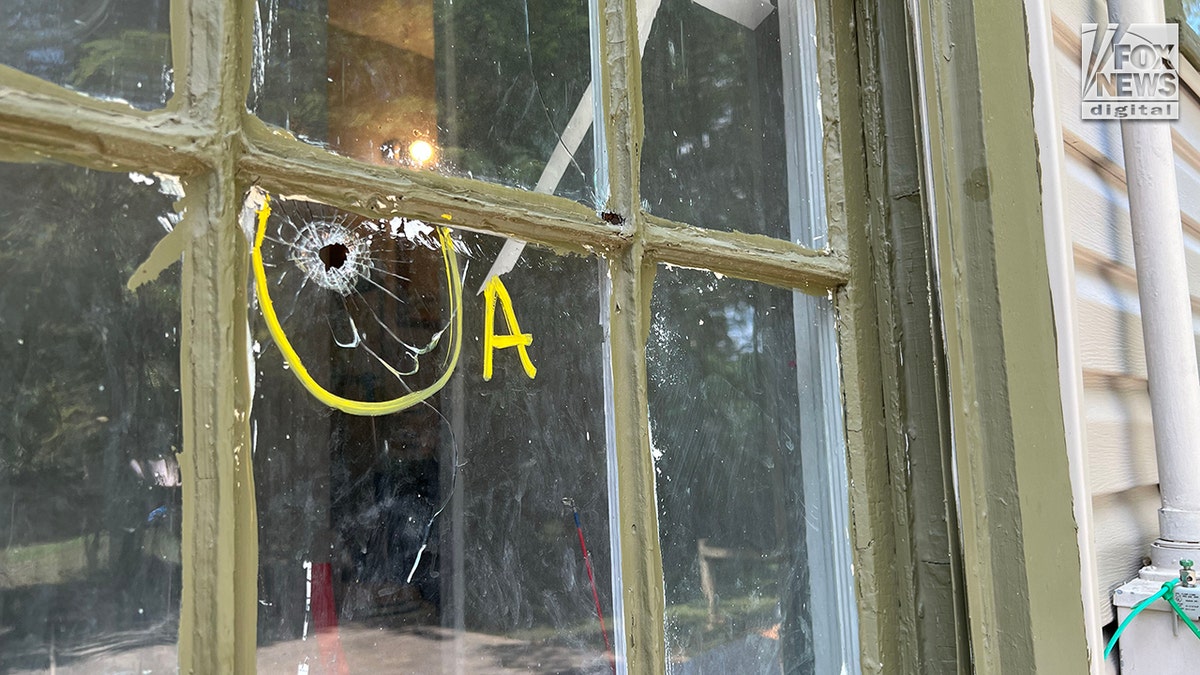Portland residents flee over homeless, crime crises
Former Portland resident Jeff Reynolds and 'The Fields Bar & Grill' owner Jim Rice joined 'Fox & Friends First' to discuss how the homeless crisis and crime surge have prompted many to flee the city.
Keeping up with the news about violent crime in America is like listening to a never-ending lineup of the worst karaoke singers in the world belt out their individual interpretations of the same bad song. Last week, in Midtown Manhattan, gunfire rang out in broad daylight. NYPD Chief of Department Kenneth Corey told reporters that the prime suspect "has multiple prior arrests in gun-related crimes — including for shooting people — and yet remains free, carrying a gun and now firing shots in Midtown Manhattan in the middle of the day."
This week, on the Upper West Side, an 82-year-old man was attacked by a machete-wielding woman who, the New York Post reported, "was out free after seven prior arrests involving a machete or other weapons, including a similar attack just days ago." Gee, where have we heard this before?
Almost invariably, when you read or hear a story about a serious violent crime — especially a shooting or homicide — the suspect will be reported as having a lengthy criminal history or an active criminal justice status (like parole, probation, or pretrial release). This is hardly a new development; and it’s certainly not unique to New York.
5 PEOPLE FOUND DEAD IN MARYLAND HOME FOLLOWING REPORTS OF SHOOTING
Just this week, the story of a deadly kidnapping in Tennessee was brought to the nation’s attention. The suspect charged in the case was released from prison in 2020 after serving part of a 24-year sentence for … kidnapping, which came two years after a 1998 conviction for rape. In the city of Chicago, a study of gun violence there found that those charged with shootings and homicides in 2015-16 had, on average, 12 prior arrests.

A bullet hole in the window is visible here at the home where Ezikel Kelly is alleged to have shot, Dewayne Tunstall last night in Memphis, Tennessee. Photo taken, September 8, 2022. (Matt Symons for Fox News Digital)
A 2006 Bureau of Justice Statistics report analyzing violent felons convicted in America’s 75 largest counties between 1990 and 2002 found that even back then — smack dab in the middle of America’s allegedly Draconian "tough-on-crime" streak — more than a third of those felons were out on pretrial release, probation, or parole when they committed the offenses they were convicted of.
"[O]nly around 400 individuals — or 0.1% of the Oakland's population — were responsible for the majority of the city's homicides." -- Giffords Law Center to Prevent Gun Violence
The reality of crime has long been that it’s a phenomenon driven mostly by a relative handful of individuals in a given jurisdiction. That’s just as, if not more, true for serious violent crime, specifically. A study of a focused deterrence program in Boston found that "between 1,100 and 1,300 [gang] members, representing less than 1% of the city's youth between the ages of 14 and 24" were responsible for "more than 60% of youth homicide."
An analysis published by the Giffords Law Center to Prevent Gun Violence (a gun control advocacy group) found that "only around 400 individuals — or 0.1% of the Oakland's population — were responsible for the majority of the city's homicides."
CLICK HERE TO GET THE OPINION NEWSLETTER
By using data to inform everything from police resource deployment to pretrial release and sentencing decisions, we have it in our power to be more precise in how we do criminal justice, reserving the sharpest edges of the system for those who pose the greatest risks to their communities. This would allow us to reap the benefits associated with the incapacitation of the most chronic offenders without having to impose so many burdens on those who aren’t threats. But our ability to do this has been hampered by reform efforts aimed at de-policing and de-carceration for their own sake.
As crime in New York City has skyrocketed over the last two years, the activists have doubled down on recent de-carceration initiatives (reforms to bail, discovery, parole, and juvenile justice) that some warned would lead to more violence. After seeing more than 800 homicides in Chicago last year, the state of Illinois is now bracing for the implementation of its own radical bail reform law. And despite Philadelphia setting an all-time record for homicides last year (a record it may break this year), its radical district attorney, Larry Krasner sailed to re-election, dismissing the possibility that his decisions to lower the transaction costs of crime commission have contributed to the carnage.
CLICK HERE TO GET THE FOX NEWS APP
In a recent op-ed in the New York Daily News, NYPD Commissioner Keechant Sewell wrote "Time and again, we see [crime drivers] get second, third and sometimes 10th chances while repeatedly demonstrating an unwillingness to correct their criminal behavior." She called on lawmakers to make the necessary changes to give police, judges, and prosecutors the tools they need to keep New Yorkers safe. Her plea has been echoed by police executives, public safety advocates (myself included), and concerned citizens across the country over the last several years. The question is: Will the decision makers listen?


